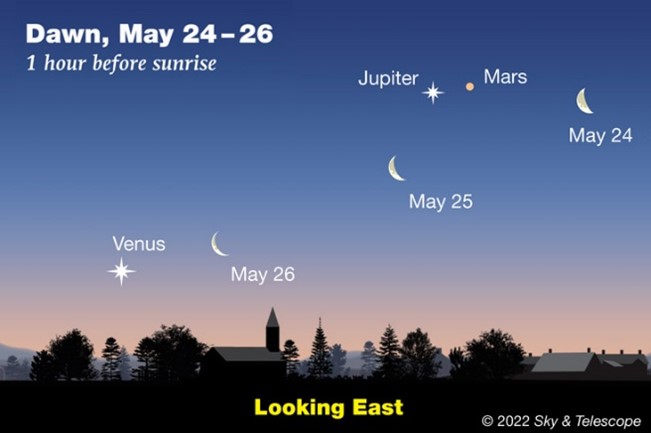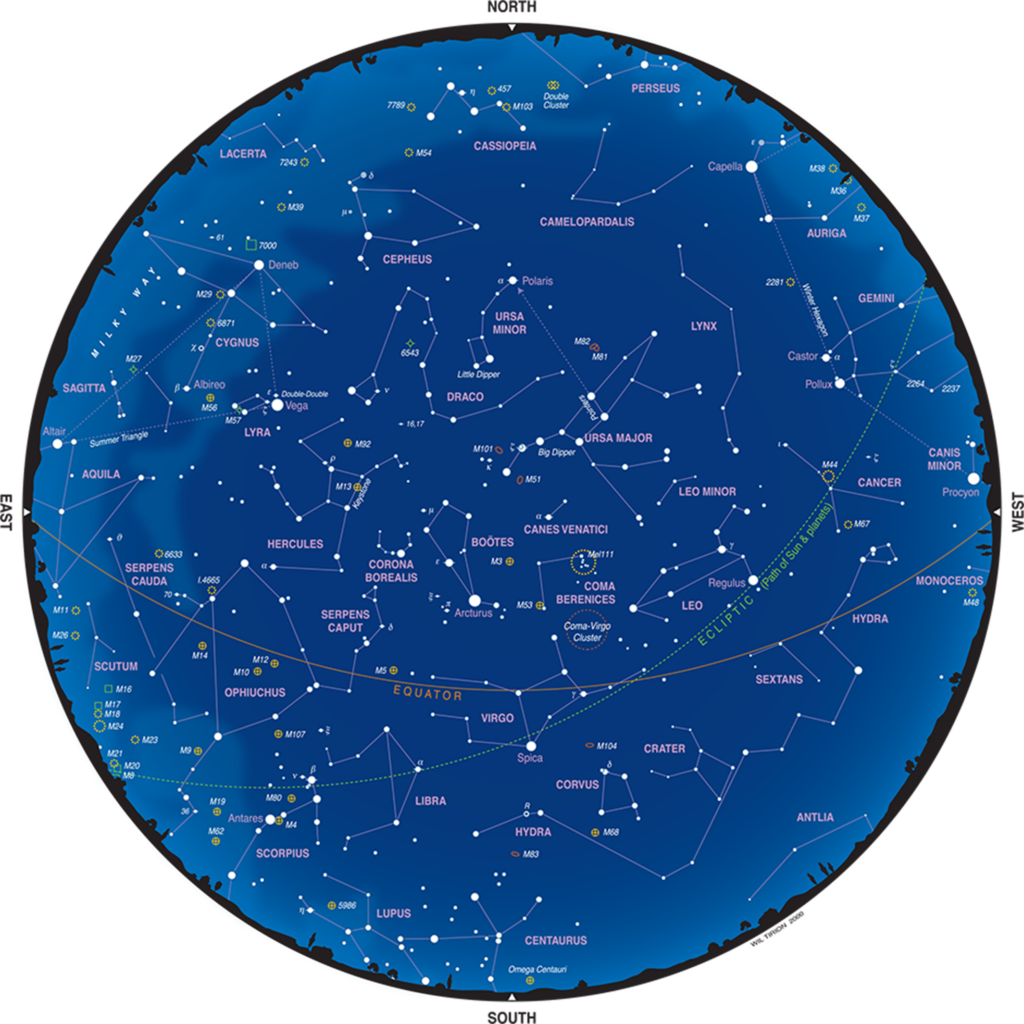By Astronomer Jim
The big-deal for the month of May is a total lunar eclipse! On May 15th, in Oregon, the moon will rise just as the total eclipse commences, at 8:30 pm. Totality will last for nearly 1.5 hours; after that, the moon’s motion will start taking it outside of the Earth’s shadow. The moon will appear “blood red” and considerably darker than normal because all the direct sunlight that normally reaches the moon will be blocked by Earth! The moon will be in the Earth’s shadow.
The moon isn’t completely dark during a lunar eclipse because of the Earth’s atmosphere refracting and reflecting solar rays, permitting some light to reach the moon—but not very much. The light arriving from the Earth’s atmosphere is tinted red which is why what we see in a total lunar eclipse is a “blood red” moon!
A total lunar eclipse can only occur during a full moon. But because of the inclination of the moon’s orbit, not every full moon results in a lunar eclipse—in fact, very few of them do! The last full total lunar eclipse was over three years ago.

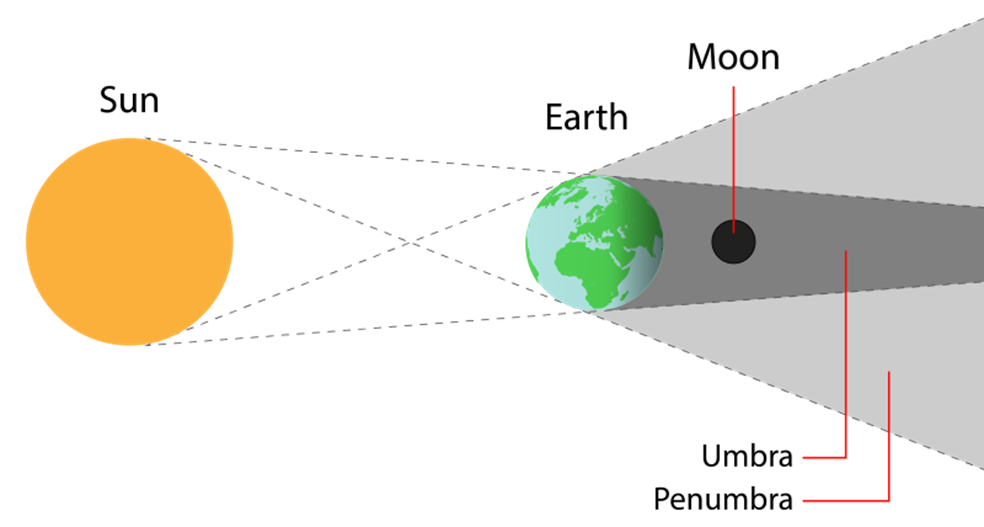
Below is a photo of Earth’s atmosphere ring (of how Earth looks from the moon). In the middle is a blood red moon as it’s coming out of totality. To the right is a total eclipse in the middle of totality. All images are considerably magnified by a telescope. If seen from the same distance, the diameter of the Earth would appear about 4 times bigger than The Moon’s.
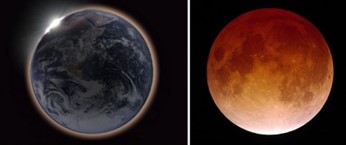

Stars in May:
The major planets are still not visible in May in the nighttime sky. If you want to see planets, you’ll need to get up early!
At Night (see the below star chart, which is calibrated at about 9:00 pm):
- Orion is gone! And so is Canis Major, Canis Minor, and Taurus. They will return next winter.
- The constellation of Leo has moved off to the east side of due south and the constellation that is now centered in the south is Virgo. Virgo is a big constellation with lots of galaxies for a big telescope, but its stars and faint and not very interesting for an observer without a telescope.
- May 2nd. The star Aldebaron, the crescent Moon, the planet Mercury, and the Pleiades are a pretty grouping.
- May 15th. Lunar eclipse.
- May 16th. The night after the total lunar eclipse, The Moon will appear very close to Antares, the giant red star in Scorpius. Because of its reddish hue, Antares looks a bit like Mars to an unaided human eye, but it’s definitely not a planet! Antares is a very large “Red Giant” star, larger in diameter than the orbit of Mars!
- May 18th, The Moon hangs near the head of Leo.
- At any time this month, follow the arc of the handle of the Big Dipper backwards until you find “Arcturus.” Arcturus is a very bright star in Bootes that will be almost due south. An interesting thing is that Arcturus is believed to be 7 billion years old—far older than anything in our own solar system, which is believed to be 4.5 billion years old. It’s believe that Arcturus is just passing through, and wasn’t formed at the same time as the other stars in nearby stellar neighborhood!
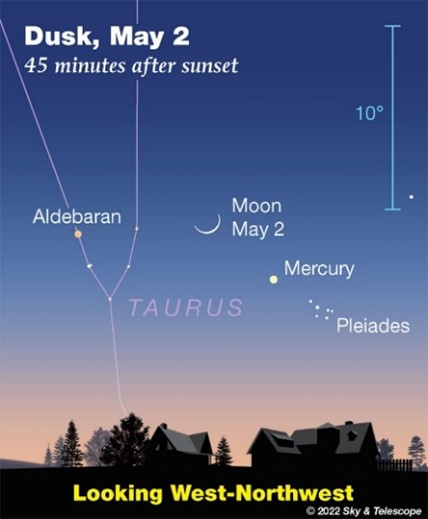
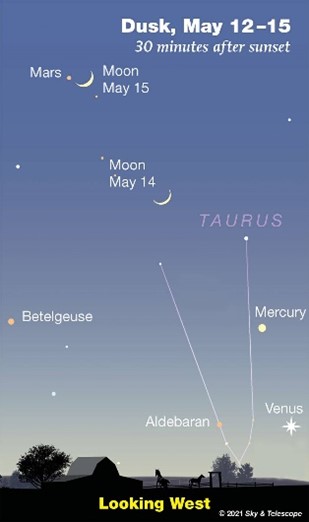

In the early Morning:
- May 6th. The Eta Aquarid Meteor Shower is at it’s height in the early morning (when it’s still completely dark, at about 4:00 am). This meteor shower is of rock debris left by Halley’s comet!
- May 25th. Jupiter, Mars, and the Moon all appear VERY CLOSE together!
- May 26th and 27th. The crescent moon and Venus will appear very close together.
- May 29th. Jupiter and Mars appear VERY CLOSE to each other in the early morning sky. They will be only ½-degree apart and in a telescope would be in the same eyepiece field of view!
